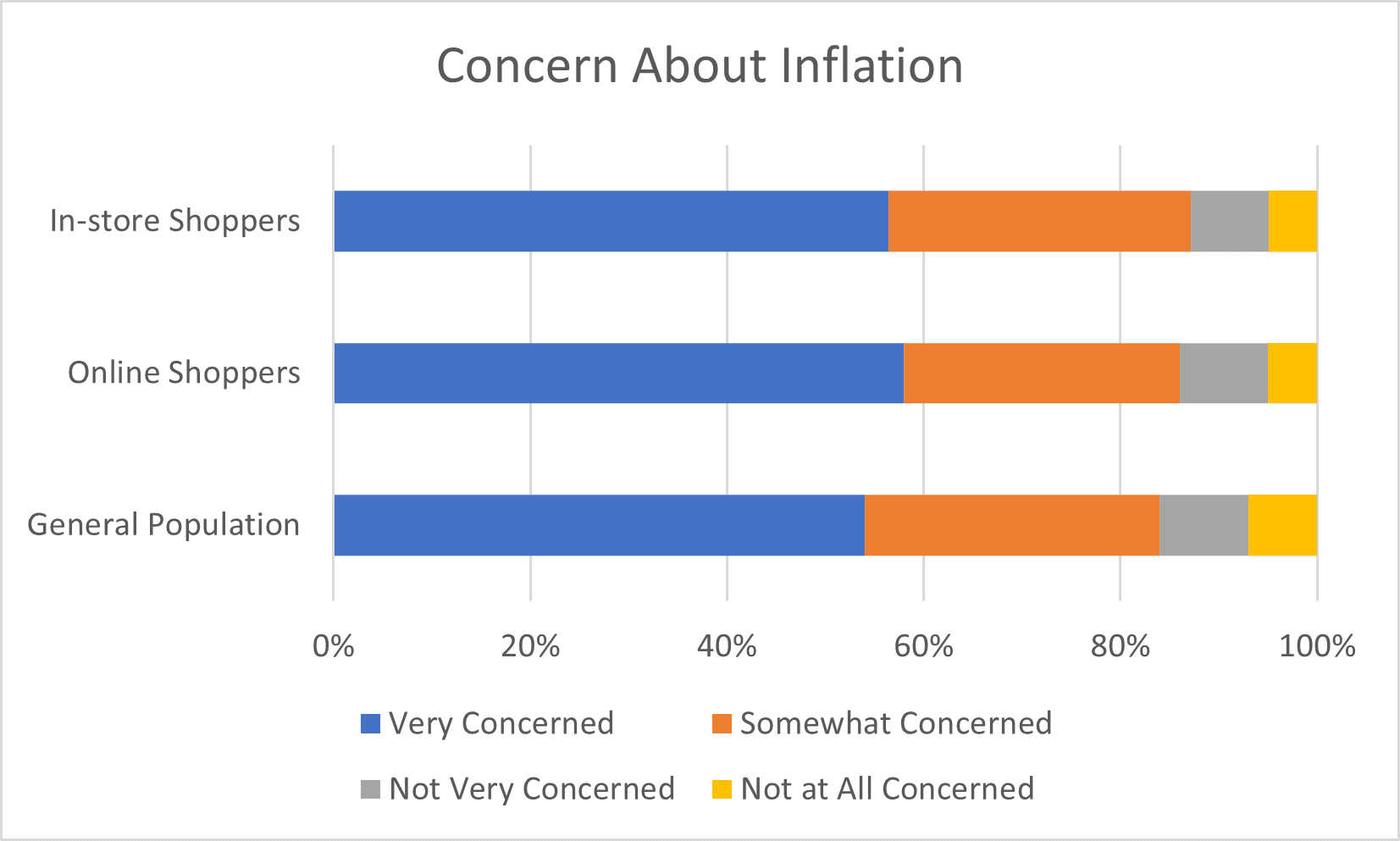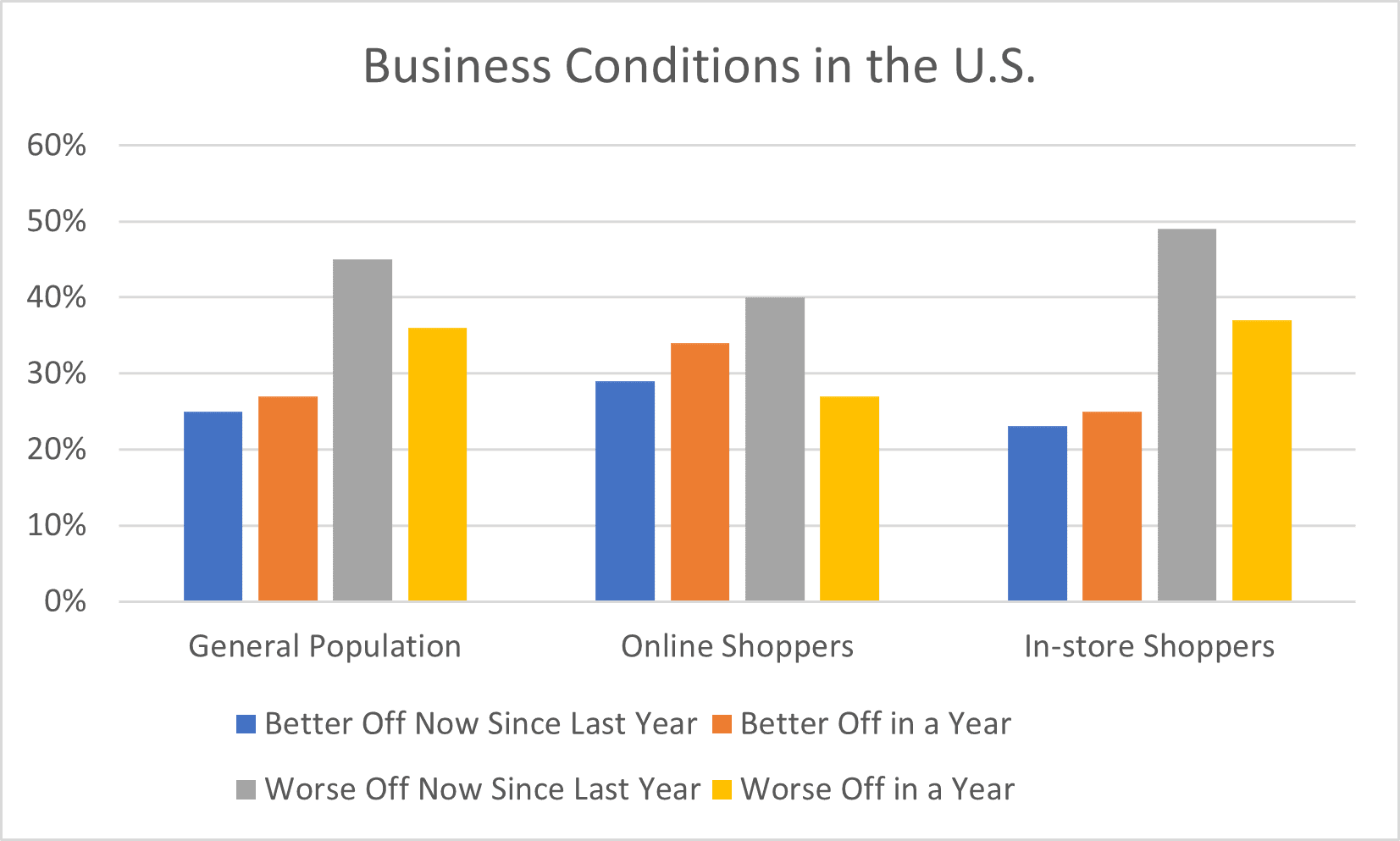Causeway Solutions Outlooks and Insights: Volume 8, 04/22 - Instant Insights
Causeway Solutions
Polling, Analytics, Shopping, Inflation
April 1, 2022
Purchasing Optimism: The Online and In-store Shopping Divide
More than 263 million Americans shop online, but 80% still buy items in-store when they need them immediately [1]. With inflation at a 40-year high, we wondered which type of shopping is more impacted. In this month’s “Instant Insights,” we take a look at online and in-store shoppers and their habits while examining how inflation has affected them and their outlook on the future.
The online retail market continues to grow, with e-commerce sales expected to reach $1 trillion by the end of 2022 [2]. This phenomenon influences present-day shopping habits, with 72% using their cell phone to purchase items online, 77% reading online reviews, and 60% using their phones to compare prices or even look up reviews while shopping in a physical store. However, even in this new digital world, about 335 still prefer to shop in-store and to purchase certain products such as clothes, shoes, household items, medicines, groceries, and prescription drugs in-person rather than online.
Breaking Down the Shoppers
Demographic profiles show that online shoppers tend to skew younger, more male, and are better educated than the general population while in-store shoppers are the opposite; slightly older, more likely to be female, and less educated. Beyond these differences, online shoppers utilize a larger variety of online retailers and use mobile for both shopping and payment, with 43% having used digital currency for retail. In-store shoppers tend to have different priorities when shopping online, valuing things such as cheaper options and more product choices over saving time and avoiding lines.
Household Financial Comparisons
For both online and in-store shoppers, about 70% believe their financial situation today is either better or about the same as it was one year ago, mirroring the general population. But online shoppers are more optimistic, with 34% saying that they are better off than last year compared to only 18% of in-store shoppers. Looking to the future, 40% of online shoppers believe their financial situation will be better a year from now compared to 27% of in-store shoppers. With consumer optimism often being tied to whether consumers will spend more or save more, according to the Consumer Confidence Index, online buyers might be at the forefront of shopping sales in the future [3].

With inflation comes increased spending and the impact was felt by everyone. Both online and in-store shoppers admitted to spending more, noting that the increased spending had at least a moderate impact on them. Fifty-six percent of online shoppers are spending more and feeling an impact (with 36% saying that it had a high impact) compared to 51% of in-store shoppers (with 31% feeling a high impact) and 52% of the general population. In-store shoppers were more likely to say that household spending remained the same or decreased at 36% (with 16% stating their household was spending less).
Inflation
Inflation concerns are evident with 85% of both online and in-store shoppers saying that they are concerned. Many in both groups even stated they were very concerned (58% online and 57% in-store). When asked about price perception, online shoppers were more likely to see price increases for most products including food, household services, childcare services, insurances, utilities, internet, and schooling and school supplies.

Satisfaction
Overall satisfaction and optimism for the country’s economy in the future differed between shoppers. Despite 51% of online shoppers saying they feel dissatisfied with the way things are going, in-store shoppers are even less happy, at 65%. A glimmer of hope can be seen in the 35% of online shoppers who believe that good economic times are coming within the next two years while only 25% of in-store shoppers agree. This divide is also reflected by how each group feels about business conditions in the next year, 35% of online shoppers believe the conditions will improve, while only 25% of in-store shoppers do.

Conclusion
Despite different habits, online and in-store shoppers share similarities when it comes to concerns with inflation and increases in household spending. The main difference between the two groups is their overall outlook on the economic situation. Despite having similar concerns about inflation and household spending, online shoppers are more optimistic, feeling more satisfied and believing that better times might just be around the corner.
Causeway Solutions offers Online Buyer and Non-Online Buyer audiences in our LiveRamp Data Marketplace, more info here: https://causewaysolutions.com/audiences/consumer-lifestyle
References:
[1]: https://www.statista.com/statistics/273957/number-of-digital-buyers-in-the-united-states/
[2]: https://www.emarketer.com/content/us-ecommerce-forecast-2021
[3]: https://www.conference-board.org/topics/consumer-confidence
To learn more, visit Causeway Solutions to get started!